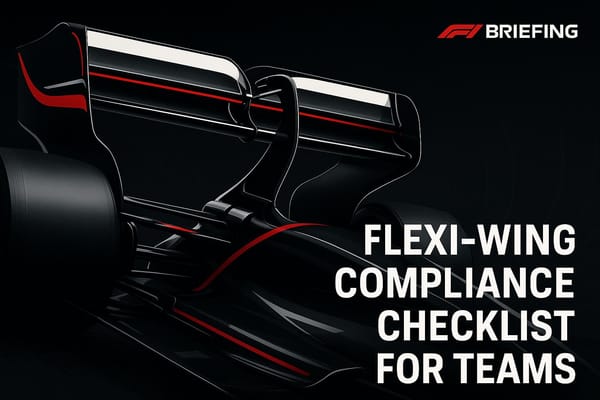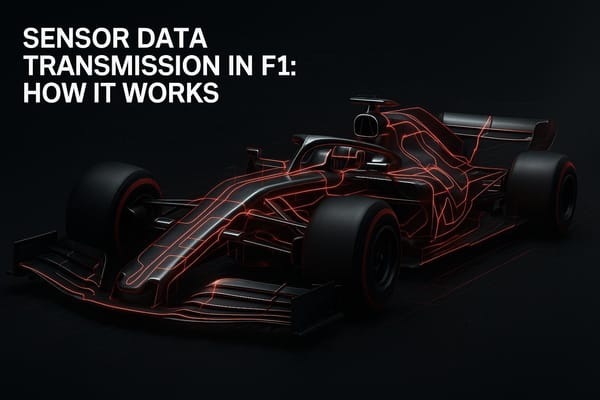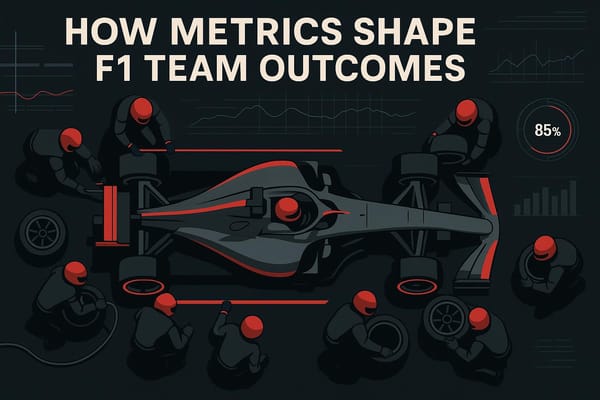FIA Radio Rules: What Teams Can Say
Explore the 2025 FIA radio rules in Formula 1, detailing what teams can communicate and the impact on driver independence and race strategy.
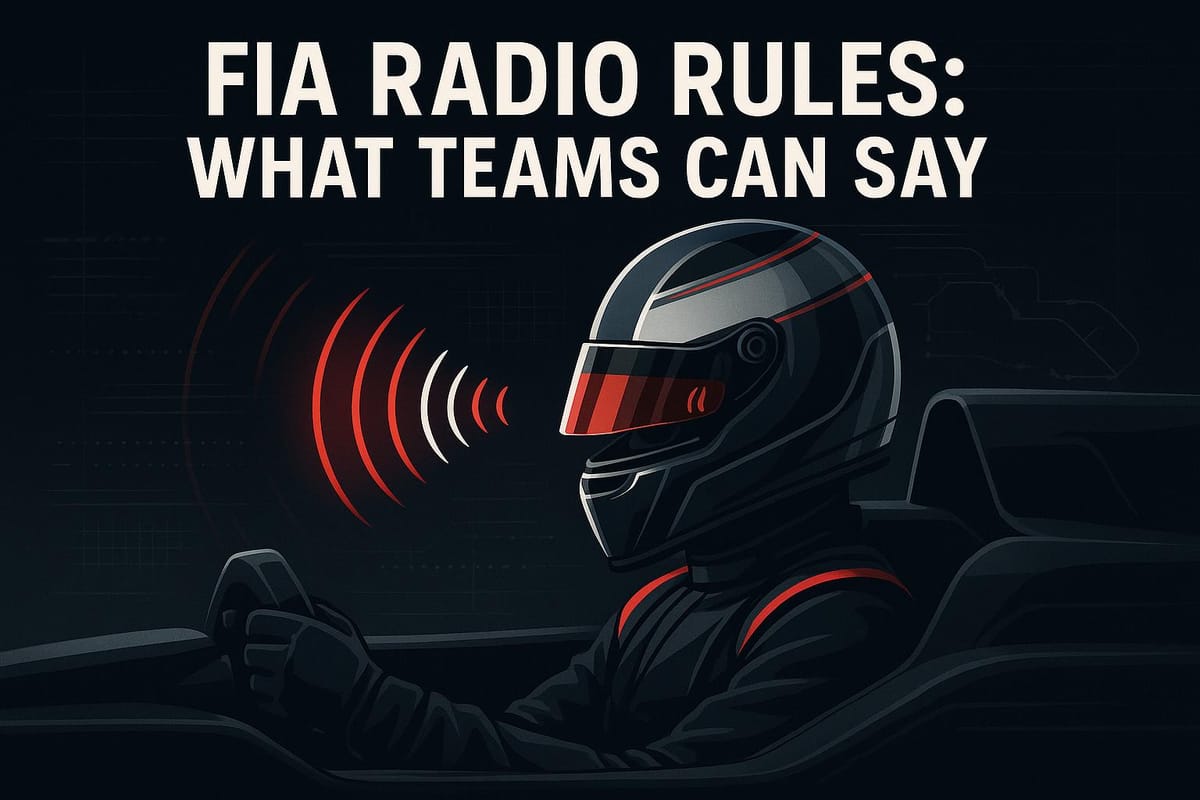
Formula 1 team radios are tightly regulated to ensure fair competition and driver independence. Here’s what you need to know about the 2025 FIA radio rules:
- Allowed Messages: Safety alerts (e.g., track hazards), race control updates (e.g., penalties, flags), and basic race info (e.g., pit stop schedules).
- Banned Messages: No coaching, technical advice, or coded messages. Drivers must manage settings like brake balance or engine modes themselves.
- Penalties: Breaking the rules can result in fines, time penalties, or point deductions.
The rules, updated in 2025, aim to make drivers rely on skill rather than pit wall guidance. The FIA monitors communications in real-time and enforces stricter penalties for violations, including inappropriate language.
This balance ensures races remain competitive, safe, and professional, while showcasing driver talent.
F1 Team Radio Messages Explained
History of FIA Radio Rules
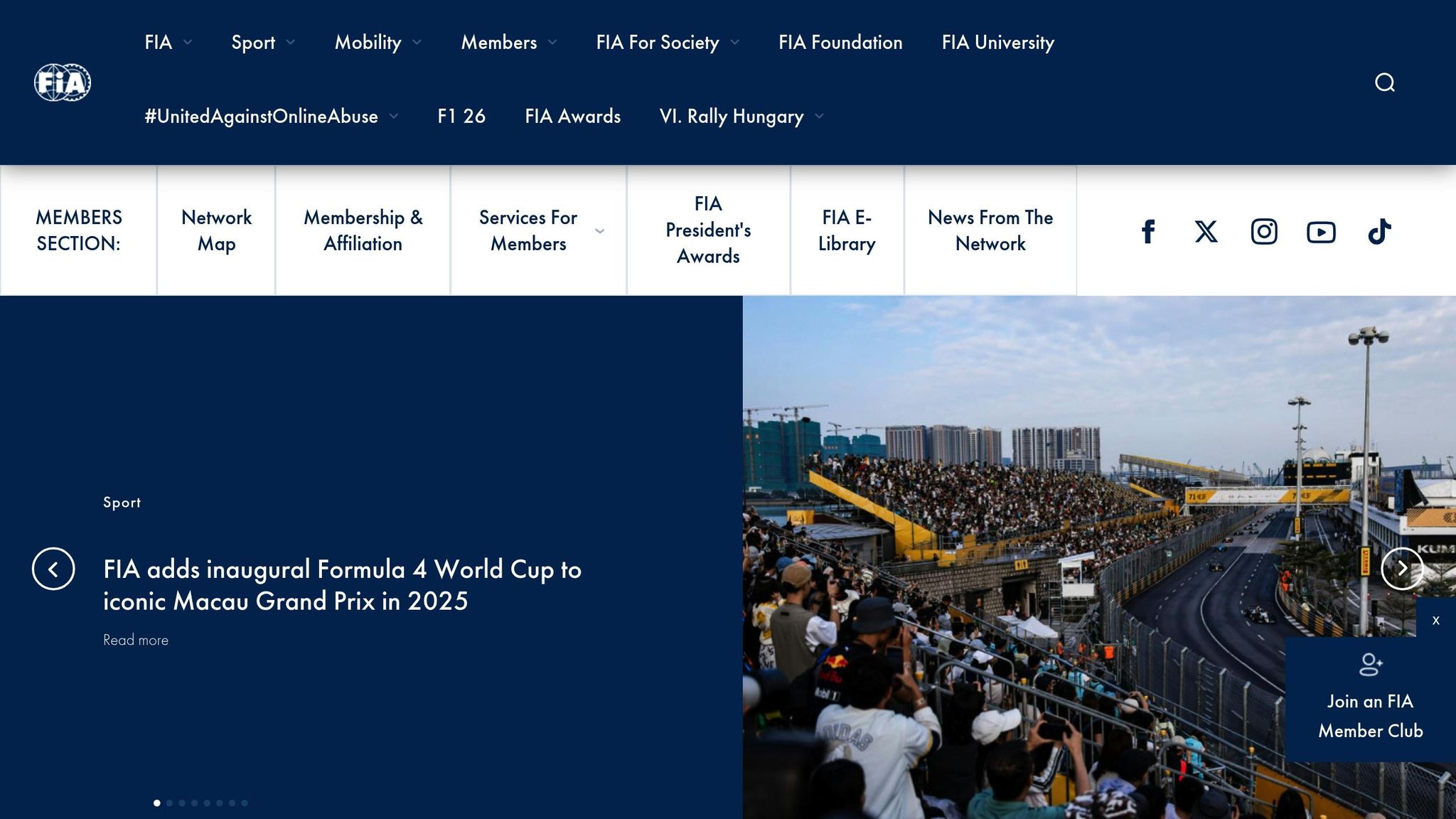
Radio communications in Formula One have evolved significantly, as the sport seeks to strike a balance between cutting-edge technology and the raw skill of its drivers. Here's a look at the key milestones that have shaped today's regulations.
Radio Rules Before 2016
Before 2016, Formula One teams enjoyed considerable freedom in their use of radio communications. Engineers could relay a wide range of information, including:
- Real-time adjustments for car settings and performance
- Strategic instructions during races
- Coaching on driving techniques
This open communication system meant drivers often leaned heavily on their pit crews for guidance, which, in turn, reduced their independence and decision-making on the track.
2016 Major Rule Changes
The landscape shifted dramatically in 2016 when the FIA introduced strict limits on team communications. Under these new rules, teams were no longer allowed to provide:
- Technical coaching or advice on car settings
- Instructions for optimizing performance
- Guidance on fuel management
- Recommendations for brake balance adjustments
"The main objectives were to place greater responsibility on drivers to manage their cars independently and to enhance the sporting challenge by limiting the information teams could relay during races", explained FIA officials.
To adapt, teams began conducting detailed pre-race briefings and explored ways to work within the allowable communication framework. This also led to heightened scrutiny from race officials, who closely monitored for any potential use of coded messages.
The groundwork laid by these 2016 rules has since paved the way for further refinements, including the significant updates set for 2025.
2025 Rules Update
The upcoming 2025 update continues to refine how teams and drivers communicate, with a focus on professionalism and broadcast standards. FIA President Mohammed Ben Sulayem has outlined several key changes.
Key Updates:
- Tighter enforcement of communication rules
- Harsher penalties for inappropriate language
- Adjustments to how live communications are broadcast
"Do we go on and then shut down the radios of live communications? Maybe. Do we delay it? Maybe", said Ben Sulayem.
Recent examples of enforcement highlight the FIA's dedication to these principles:
| Driver | Incident | Penalty |
|---|---|---|
| Max Verstappen | Inappropriate language at Singapore GP | One-day community service |
| Charles Leclerc | Swearing at Mexico City GP media event | $10,000 fine ($5,000 suspended) |
These updates underline Formula One's ongoing commitment to balancing transparency, professionalism, and the integrity of the sport, ensuring a competitive yet respectful environment for all involved.
Permitted Radio Communications
As part of the 2025 rules update, the FIA has laid out clear guidelines for what teams can communicate during races. Under these regulations, teams are allowed to share essential information with their drivers. One of the most important categories is safety communication, which involves alerting drivers to hazards on the track or other urgent situations. Additionally, teams can provide operational updates necessary for managing the race effectively.
The FIA requires that all messages be clear, factual, and strictly limited to non-strategic information. This means no coaching or strategic advice is permitted, ensuring that drivers receive only the critical, real-time details they need while maintaining fairness and upholding safety standards on the track.
Banned Radio Communications
To maintain the competitive spirit of Formula 1, officials enforce strict rules on prohibited radio messages. The FIA has implemented these regulations to ensure fair play, focusing on two main areas: technical coaching and coded messages.
Technical Coaching Ban
The FIA strictly forbids any radio communication that provides technical guidance during races. This ensures drivers rely on their skills and pre-race preparation rather than real-time coaching. For instance, teams cannot offer instructions like:
- Adjusting car settings
- Modifying brake balance
- Switching engine modes
- Managing tire performance
- Sharing driving technique tips
Messages such as "Move your brake balance forward by two clicks" or "Switch to engine mode seven for better acceleration" are clear violations of these rules. To enforce compliance, the FIA uses advanced monitoring systems to track all team communications.
Code Words and Monitoring
The regulations also target hidden directives in team communications. Teams must submit a detailed list of their standard phrases and their meanings before the season begins, helping officials identify potential violations.
The FIA employs sophisticated methods to detect coded messages, including:
- Real-time and post-race pattern recognition
- Analysis of unusual language that might indicate hidden instructions
Breaking these rules can result in serious consequences, such as:
- Time penalties during races
- Financial fines
- Deduction of championship points
- Disqualification in severe cases
"We're still the owners of the championship", said FIA President Mohammed Ben Sulayem, underlining the importance of enforcing radio restrictions.
These bans have reshaped race preparations. Teams now focus heavily on pre-race briefings and driver training, shifting the responsibility onto drivers to make critical decisions during races. This change has elevated the sport's competitive edge, emphasizing the drivers' ability to adapt and strategize independently.
Rules Enforcement
The FIA takes a meticulous approach to enforcing radio communication rules in Formula 1, relying on cutting-edge technology and skilled human oversight to ensure teams follow the regulations. Here's a closer look at how live communications are monitored and what happens when rules are broken.
Radio Monitoring Methods
The FIA uses a centralized system that records and monitors all team communications in real time. This system, integrated with race control, serves multiple purposes: it tracks live radio conversations, flags potentially suspicious messages, and archives logs for further analysis. Advanced audio tools work alongside human experts to identify prohibited coaching or the use of coded language. Looking ahead to the 2025 season, the FIA is considering steps like delaying live broadcasts. This measure aims to prevent teams from exploiting real-time transmissions while preserving the integrity of the competition.
Rule Violation Penalties
When rules are broken, the FIA enforces a range of penalties. These include monetary fines, time penalties, grid position drops, and even point deductions. To ensure accountability and fairness, teams have the right to contest penalties through an appeals process. During these hearings, they can present evidence to support their case.
Additionally, the FIA reviews and delays broadcasts to filter inappropriate language and safeguard strategic information, striking a balance between transparency and competitive fairness.
Key Points Summary
Here’s a breakdown of the main aspects of the FIA's radio communication rules in Formula One:
The FIA has set clear guidelines to control what teams can and cannot communicate to their drivers during a race. By 2025, these rules aim to draw a firm line between messages that are essential for safety and fairness, and those that could unfairly influence race results.
Messages that are allowed include:
- Safety Notifications: Alerts about hazards or incidents on the track.
- Race Control Updates: Official information about flags, penalties, or other directives.
- Basic Race Information: Routine details like pit stop schedules and lap numbers.
What’s strictly off-limits? Any form of technical coaching or performance-related instructions, such as advice on driving techniques or adjustments to car settings. This ensures that success on the track comes down to driver skill rather than external guidance.
The groundwork for these tighter 2025 rules was laid by earlier reforms, and the updated regulations will feature stricter monitoring and penalties to ensure compliance.
FAQs
How will the 2025 FIA radio rules promote greater driver independence during races?
2025 FIA Radio Rules: A New Challenge for Drivers
The FIA's 2025 radio rules are set to shake things up by putting more responsibility directly on the drivers. By limiting the type of information teams can share during races, the focus shifts toward drivers making their own split-second decisions in real time.
Under these new guidelines, teams will face tighter restrictions on offering tactical advice. This includes guidance on the best racing lines or detailed updates on strategy during key moments. The goal? To ramp up the competitive edge and put a spotlight on individual driver skill. This change promises to make races more unpredictable and exciting, as drivers will need to rely more on their instincts and expertise.
What happens if a team breaks the FIA's 2025 radio communication rules during a race?
If a team breaks the FIA's 2025 radio communication rules, they could face a range of penalties. These might include fines, time penalties, or, in severe cases, disqualification. The purpose of these rules is to uphold fair competition and protect the sport's integrity.
For instance, giving drivers banned instructions during crucial race moments could lead to swift consequences. Teams need to stay vigilant and adhere to the rules to avoid putting their race outcomes at risk.
How does the FIA monitor and stop teams from using coded messages over the radio during races?
The FIA keeps a close eye on team radio communications during races using advanced monitoring systems. Every message is recorded and reviewed in real time to ensure teams are sticking to the rules. If a message comes across as unclear or possibly coded, it can be flagged for further investigation.
To avoid any hidden messages, the FIA requires all radio communications to be straightforward and strictly about racing operations. Teams know that breaking these rules could result in penalties, so they stay within the guidelines. This approach ensures fair play and transparency for all teams and drivers.

